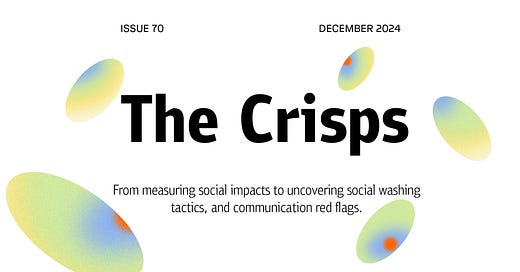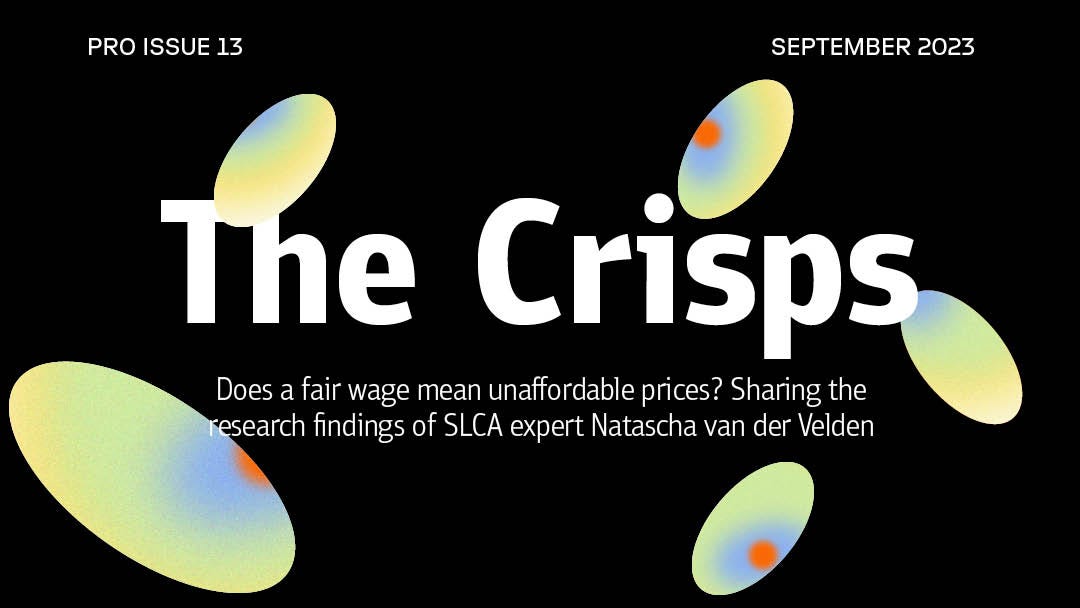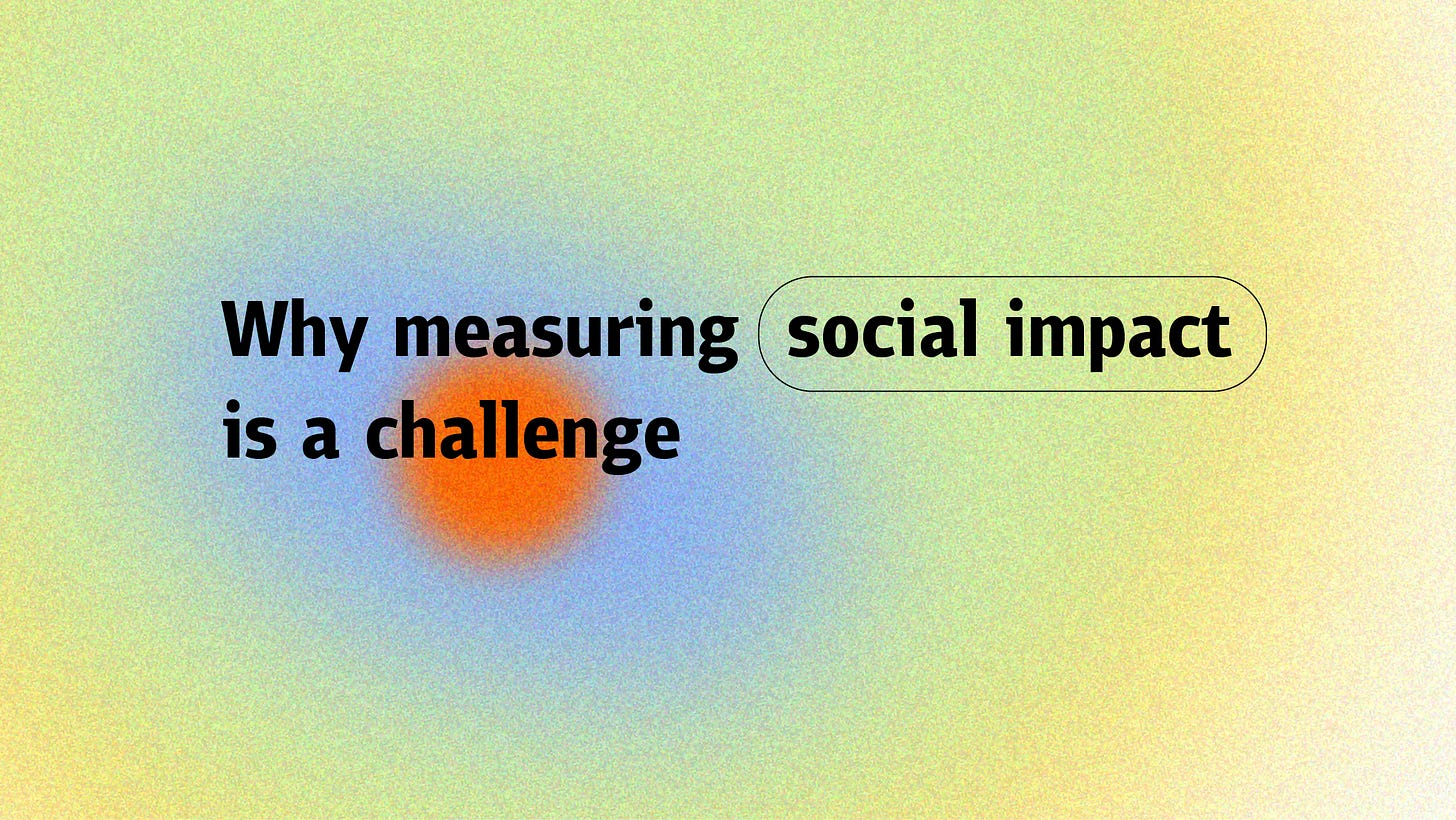Make sustainability as much about people as it is about the planet
From measuring the social impact to more examples of social washing
Welcome to another issue of The Crisps – your newsletter on anti-greenwashing and honest fashion communication. You can support us by subscribing to a free or pro subscription, liking, sharing, or commenting on our posts.
When speaking about sustainability in our industry, social impacts often fall short in the discussion. But there is no sustainability without social justice. In this issue, we look at the challenges of measuring social impact, why social metrics should be a part of DPPs, and the bare minimum brands have to do.
What to expect in today’s pro section:
Uncovering social washing tactics from H&M to G-Star Raw
Action steps to more accountability
Red flags in fashion communication
All the best,
Tanita & Lavinia
The Bare Minimum
The EU's Corporate Sustainability Reporting Directive (CSRD) represents a significant step in enforcing corporate accountability. Effective since January 2023, it expands sustainability reporting obligations for companies operating in the EU, ensuring they disclose comprehensive information about their environmental, social, and governance (ESG) impacts. The CSRD aligns with global standards such as the EU Taxonomy and the Global Reporting Initiative (GRI), demanding detailed transparency on:
environmental performance, including emissions and resource use
social impacts, such as labor rights and community engagement
governance metrics, like anti-corruption measures and executive accountability
This mandatory framework sets a high baseline to create a unified standard for sustainable corporate practices.1
While the CSRD is a pivotal tool for enforcing sustainable practices, many brands treat compliance as a great achievement. But is adhering to laws on human rights and environmental protection truly a “win”? Here are our two cents:
Compliance with legal frameworks like the CSRD is not a feat worthy of celebration—it’s the bare minimum. Regulations mandating ethical supply chains and emissions disclosures are designed to prevent harm and promote accountability rather than to award recognition. Framing basic legal adherence as extraordinary dilutes the focus on innovation and systemic change.
Many companies exploit compliance as a marketing tool to enhance their ethical or sustainable image. This tactic can mislead consumers and stakeholders and often overshadows unresolved systemic issues such as overproduction, which strains natural resources, and exploitative practices in supply chains that persist despite superficial ESG efforts.
We previously discussed Social Life Cycle Assessments (SLCAs) as tools for quantifying a product's lifecycle's human and societal dimensions. If you want to understand the topic in great detail, find our deep dives into SLCAs here:
Can you measure the social impact of fashion?
Welcome to the latest issue of The Crisps, your newsletter on anti-greenwashing and honest fashion communication. In this issue, we dive into Social Life Cycle Assessments (SLCAs) and how they can measure the social impact of textile products.
Does a fair wage mean unaffordable prices?
Welcome to a new issue of The Crisps–your weekly newsletter on anti-greenwashing and honest fashion communication. In this issue, we take a deep dive into Social Life Cycle Assessments and share the research findings of Dr. Ir. Natascha M. van der Velden, one of the leading experts in the field.
Traditionally, Life Cycle Assessments (LCAs) focus on environmental factors like carbon emissions, water use, and energy consumption and don’t include social aspects. However, addressing labor conditions, community impact, and equity throughout the supply chain provides a more comprehensive understanding of a product’s impact.
Quantifying social impact is complex. Unlike carbon emissions or water usage, social issues are entangled with cultural, economic, and political systems. While important, metrics like worker wages or local economic development often fail to address deeper systemic problems such as overproduction, global inequalities perpetuated by low wages and lax labor laws in certain regions, and power imbalances, particularly in multinational supply chains where local communities have little influence.
To counter these limitations, integrating robust social metrics into LCAs is essential. These metrics provide a fuller understanding of a product’s lifecycle, encompassing human rights alongside environmental considerations. Key metrics include:
Worker rights including fair wages, safe working conditions, and freedom of association.
Community impact including the risk of displacement, access to resources, and local economic development.
Equity and inclusion that address systemic inequalities such as gender and caste-based oppression.
Supply chain transparency that ensures traceability to mitigate risks of forced or child labor.
When implemented thoughtfully, these metrics strengthen accountability, which makes it harder for companies to disguise harmful practices behind sustainability buzzwords.
Introduced under the Ecodesign for Sustainable Products Regulation (ESPR), Digital Product Passports (DPPs) are digital records designed to provide end-to-end visibility into a product’s lifecycle. They will become mandatory for products sold in the EU by 2030 and include sustainability metrics from raw material extraction to disposal.
By integrating social metrics into LCAs and linking them to DPPs, brands can move toward more equitable and transparent supply chains that ensure sustainability is as much about people as it is about the planet. Embedding human-centered data into DPPs also makes social conditions transparent to consumers, regulators, and businesses. How it works?
Standardized frameworks: Use established guidelines, such as the UN Guiding Principles Reporting Framework or the OECD Guidelines for Multinational Enterprises.
Traceability tools: Leverage blockchain and similar technologies to ensure accurate documentation of labor conditions and sourcing practices.
Consumer transparency: Create user-friendly DPP interfaces that make social metrics accessible and understandable for consumers who don’t know the complexities of our industry in great detail.2
Welcome to our pro section!
In this issue’s pro section, we get practical.
Uncovering social washing tactics from H&M to G-Star Raw
Action steps to more accountability
Red flags in fashion communication
1. Cherry-picking positive stories
Keep reading with a 7-day free trial
Subscribe to The Crisps to keep reading this post and get 7 days of free access to the full post archives.








